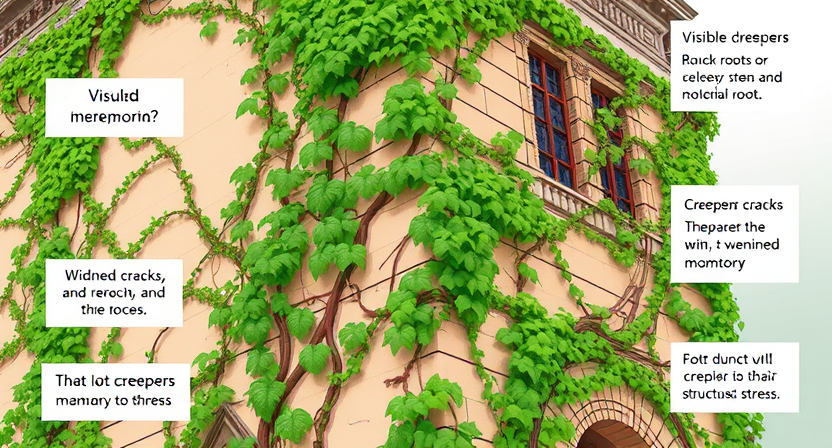Understanding Indoor Creeper Behavior
Indoor creepers, also known as houseplants or vine plants, have gained popularity in recent years as trendy additions to home décor. These plants are characterized by their ability to climb, crawl, or trail along walls, furniture, and other surfaces. Understanding their behavior is crucial for maintaining a healthy, aesthetically pleasing indoor environment.
One key aspect of indoor creeper behavior is their natural inclination to seek out sunlight. These plants have a strong phototropism, meaning they will grow towards light sources. This behavior can result in creepers leaning towards windows or stretching towards artificial light fixtures. It is important to be aware of this tendency when placing indoor creepers, ensuring they have access to sufficient light for optimal growth. Additionally, monitoring their growth patterns can help prevent potential damage to walls or furniture as they extend their stems and branches.
• Indoor creepers, also known as houseplants or vine plants, have gained popularity in recent years
• These plants are characterized by their ability to climb, crawl, or trail along walls and furniture
• Understanding their behavior is crucial for maintaining a healthy indoor environment
One key aspect of indoor creeper behavior is their natural inclination to seek out sunlight.
• They have a strong phototropism and will grow towards light sources
• Creepers may lean towards windows or stretch towards artificial light fixtures
It is important to be aware of this tendency when placing indoor creepers:
• Ensure they have access to sufficient light for optimal growth
• Monitor their growth patterns to prevent potential damage to walls or furniture
Identifying Common Types of Indoor Creepers
When it comes to identifying common types of indoor creepers, it is essential to pay attention to the various characteristics they exhibit. One common type is the Pothos (Epipremnum aureum), known for its heart-shaped, glossy leaves that can range from green to variegated shades of yellow and white. Pothos plants are known for their trailing growth habit and can easily adapt to various lighting conditions, making them a popular choice for indoor spaces. Another type to watch out for is the English Ivy (Hedera helix), which is recognizable by its dark green, lobed leaves that grow on long, trailing vines. This creeper thrives in moderate to low light and can quickly spread and climb walls and furniture if left unchecked.
Additionally, the Spider Plant (Chlorophytum comosum) is a well-known indoor creeper due to its arching, grass-like leaves that have white stripes along the edges. These plants produce long, slender stems with small, baby plants or spiderettes that dangle from them, adding an extra decorative touch. Lastly, the String of Pearls (Senecio rowleyanus) is a unique type of creeper characterized by its cascading trailing stems adorned with round, bead-like leaves. This creeper prefers bright, indirect light conditions and is often used as a hanging plant or as a trailing accent in arrangements. By recognizing these common types of indoor creepers, you can better understand their specific growth patterns and care requirements.
• Pothos (Epipremnum aureum):
– Heart-shaped, glossy leaves
– Range of green to variegated shades of yellow and white
– Trailing growth habit
– Adapts well to various lighting conditions
• English Ivy (Hedera helix):
– Dark green, lobed leaves
– Grows on long, trailing vines
– Thrives in moderate to low light
– Can spread and climb walls and furniture if not controlled
• Spider Plant (Chlorophytum comosum):
– Arching, grass-like leaves with white stripes along the edges
– Produces baby plants or spiderettes that dangle from stems
– Adds decorative touch with its unique appearance
• String of Pearls (Senecio rowleyanus):
-Cascading trailing stems adorned with round bead-like leaves
-Prefers bright indirect light conditions
-Often used as a hanging plant or trailing accent
By understanding these common types of indoor creepers, you can provide them with the proper care they need for healthy growth.
Recognizing the Signs of a Creeper Infestation
Creepers can often go undetected until infestations become severe. Hence, it is crucial to recognize the signs of a creeper infestation early on to prevent further damage. One of the most visible indications is the presence of extensive growth on surfaces such as walls, floors, and furniture. Creepers, marked by their tendrils or vines, tend to spread rapidly, covering large areas within a short period.
Moreover, lookout for any unusual discoloration or formation of mold and mildew. Creepers tend to trap moisture, creating ideal conditions for mold growth. Mold patches can vary in color, ranging from green and black to brown or gray, depending on the type of creeper. These patches can be found not only on walls but also on ceilings or in damp corners. As you inspect your indoor space, keep an eye out for these signs to identify a possible creeper infestation.
• Extensive growth on surfaces such as walls, floors, and furniture
• Presence of tendrils or vines spreading rapidly
• Unusual discoloration or formation of mold and mildew
• Mold patches varying in color (green, black, brown, gray)
• Mold patches found on walls, ceilings, or damp corners
Creating a Hostile Environment for Creepers
One of the most effective ways to discourage creepers from infesting your indoor space is by creating a hostile environment for them. Start by minimizing clutter and keeping your indoor areas clean and organized. Creepers thrive in damp and dark environments, so make sure to promptly fix any water leaks or moisture issues in your home. Additionally, consider using a dehumidifier to reduce excess humidity that can attract creepers.
Another strategy to deter creepers is by blocking their entry points. Carefully inspect your windows, doors, and any other openings in your home and seal any gaps or cracks. This will not only prevent creepers from entering your space but also help in maintaining a well-insulated environment. In addition, consider adding screens to your windows and doors to provide an extra layer of protection against creepers while allowing airflow. Remember, creating a hostile environment for creepers is an essential step in keeping them at bay and preventing infestations in your indoor spaces.
• Minimize clutter and keep indoor areas clean and organized
• Promptly fix any water leaks or moisture issues in your home
• Use a dehumidifier to reduce excess humidity
• Inspect windows, doors, and other openings for gaps or cracks and seal them
• Add screens to windows and doors for extra protection while allowing airflow
Implementing Natural Remedies to Control Creepers
When it comes to controlling creepers indoors, implementing natural remedies can be an effective and safe approach. One popular method is vinegar. Its strong smell acts as a repellent for many types of creepers. Mixing equal parts vinegar and water in a spray bottle and applying it to areas where creepers are present can help deter them from infesting your home. Additionally, the acidity of vinegar can also disrupt their ability to cling onto surfaces, making it easier to remove them.
Another natural remedy to consider is diatomaceous earth. This powdery substance, made from fossilized remains of marine organisms, works by physically damaging the outer skeleton of creepers, leading to dehydration and eventual death. Sprinkling diatomaceous earth in cracks, crevices, and other areas where creepers like to hide can be an effective way to control their population. Remember to choose food-grade diatomaceous earth, as it is safer for use around humans and pets.
– Vinegar can be used as a natural repellent for creepers indoors.
– Mixing equal parts vinegar and water in a spray bottle and applying it to areas where creepers are present can help deter them.
– The acidity of vinegar can also disrupt their ability to cling onto surfaces, making removal easier.
– Diatomaceous earth is another effective natural remedy for controlling creepers.
– This powdery substance works by physically damaging the outer skeleton of creepers, leading to dehydration and eventual death.
– Sprinkling diatomaceous earth in cracks, crevices, and other hiding spots of creepers can help control their population.
– It is important to choose food-grade diatomaceous earth for safety around humans and pets.
Using Chemical Solutions to Eradicate Creepers
Chemical solutions can be an effective method of eradicating creepers from indoor spaces. These solutions are designed to target and eliminate the root cause of infestations, ensuring a long-lasting solution. When using chemical solutions, it is crucial to follow the instructions provided by the manufacturer to ensure safety and efficacy.
One of the most commonly used chemical solutions is a pesticide specifically formulated for creepers. These pesticides contain ingredients that are lethal to creepers, effectively killing them upon contact. It is essential to carefully apply these pesticides to the affected areas, focusing on areas where creepers are most likely to hide or thrive. By systematically treating these areas, you can effectively eliminate the creepers from your indoor space. Remember to take precautionary measures such as wearing protective clothing and keeping the treated area well-ventilated during the application process.
• Carefully apply pesticides to affected areas
• Focus on areas where creepers are likely to hide or thrive
• Systematically treat these areas for effective elimination
• Wear protective clothing during application process
• Keep treated area well-ventilated
Removing Creepers Safely and Effectively
One of the key aspects of managing a creeper infestation in your indoor space is the safe and effective removal of these unwanted plants. Taking the necessary precautions will not only ensure your safety but also contribute to the successful eradication of creepers. When removing creepers, it is important to first identify the type of creeper you are dealing with. This will enable you to determine the most appropriate method for removal, as different creepers may require different approaches.
Before you begin the removal process, it is advisable to wear protective clothing such as gloves and goggles to avoid any contact with irritants or toxins that some creepers may possess. Additionally, make sure to have the necessary tools on hand, such as pruning shears or a trowel, depending on the size and location of the creepers. When removing creepers, it is essential to start from their base and work your way up to ensure complete removal. Carefully uproot or cut the creepers, making sure to dispose of them properly to prevent any reinfestation. Remember to clean and sanitize the area once the removal process is complete to eliminate any lingering traces of the creepers. By following these steps, you can effectively remove creepers from your indoor space in a safe and efficient manner.
• Identify the type of creeper you are dealing with before removal
• Wear protective clothing such as gloves and goggles to avoid contact with irritants or toxins
• Have necessary tools like pruning shears or a trowel on hand
• Start from the base of the creepers and work your way up for complete removal
• Carefully uproot or cut the creepers, disposing of them properly to prevent reinfestation
• Clean and sanitize the area after removal to eliminate any lingering traces of creepers
Preventing Creeper Reinfestation in Indoor Spaces
To prevent creeper reinfestation in indoor spaces, it is crucial to first eliminate the existing infestation completely. Thoroughly inspect all areas where creepers have been found and remove them manually, ensuring that all roots and runners are also removed. Additionally, consider applying a natural deterrent, such as vinegar or citrus spray, to surfaces and crevices where creepers are likely to thrive. This will create an inhospitable environment and discourage their return.
Maintaining a clean and organized indoor environment is essential for preventing creeper reinfestation. Regularly clean and vacuum all areas, paying special attention to corners and hidden spaces where creepers may take root. Keep windows and doors securely sealed to prevent creepers from entering. Additionally, avoid placing plants near entryways or windows, as this can provide an easy pathway for creepers to infest the indoors. By practicing these preventative measures and remaining vigilant, you can significantly reduce the risk of creeper reinfestation in your indoor spaces.
• Thoroughly inspect all areas where creepers have been found and remove them manually, including roots and runners
• Apply natural deterrents like vinegar or citrus spray to surfaces and crevices where creepers are likely to thrive
• Regularly clean and vacuum all areas, paying special attention to corners and hidden spaces
• Keep windows and doors securely sealed to prevent creepers from entering
• Avoid placing plants near entryways or windows as they can provide an easy pathway for infestation
Maintaining a Clean and Organized Indoor Environment
A clean and organized indoor environment is not only visually appealing, but it is also essential for preventing the growth and spread of indoor creepers. Regular cleaning and tidying up can help eliminate potential hiding spots for these unwanted guests. Start by regularly vacuuming or sweeping floors, especially in hard-to-reach areas such as corners and beneath furniture. This will ensure that any debris or food particles, which may attract creepers, are promptly removed.
Additionally, pay attention to cluttered areas and frequently declutter your living spaces. Piles of magazines, newspapers, or cardboard boxes can provide perfect hiding spots for creepers to nest and multiply. By keeping surfaces clear and organized, you minimize the chances of a creeper infestation taking hold. Be sure to regularly clean and disinfect surfaces, including countertops, tables, and shelves, using appropriate cleaning products. Maintaining a clean and organized indoor environment is a simple yet effective method for discouraging creepers from settling in your home.
• Regularly vacuum or sweep floors, especially in corners and beneath furniture
• Declutter living spaces by removing piles of magazines, newspapers, or cardboard boxes
• Clean and disinfect surfaces such as countertops, tables, and shelves regularly
• Use appropriate cleaning products to eliminate potential hiding spots for creepers.
Seeking Professional Help for Persistent Creeper Problems
If your home is infested with persistent creepers despite your best efforts to control them, it may be time to seek professional help. While DIY methods can be effective in many cases, certain infestations require the expertise of trained professionals. These professionals have the knowledge and experience to identify and eliminate even the most stubborn creepers.
When seeking professional help for persistent creeper problems, it is important to choose a reputable pest control company. Look for companies that specialize in dealing with indoor creepers and have a proven track record of success. Professional exterminators will conduct a thorough inspection of your home, identifying the extent of the infestation and determining the best course of action. They will then implement targeted strategies to eliminate the creepers and prevent future infestations from occurring. With their help, you can regain control of your indoor space and enjoy a creeper-free environment once again.
• Reputable pest control companies specialize in dealing with indoor creepers and have a proven track record of success.
• Professional exterminators conduct a thorough inspection to identify the extent of the infestation.
• They determine the best course of action to eliminate the creepers and prevent future infestations.
• Targeted strategies are implemented to effectively remove persistent creepers from your home.
• Seeking professional help ensures that you regain control of your indoor space and enjoy a creeper-free environment.












